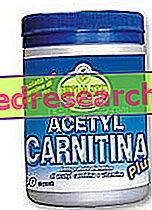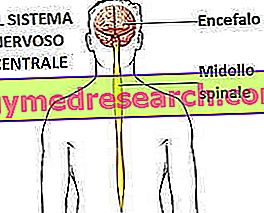GOLA ACTION® is a drug based on Benzidamine hydrochloride + Cetylpyridinium chloride
THERAPEUTIC GROUP: Stomatology
IndicationsAction mechanismStudies and clinical effectiveness Usage and dosage instructionsWarnings Pregnancy and lactationInteractionsContraindicationsUndesirable effects
Indications GOLA ACTION ® Benzidamine hydrochloride + Cetylpyridinium chloride
GOLA ACTION® is indicated as an anti-inflammatory and analgesic during inflammatory or irritative diseases of the oral cavity and upper respiratory tract.
Action mechanism GOLA ACTION ® Benzidamine hydrochloride + Cetylpyridinium chloride
The anti-inflammatory activity of GOLA ACTION® is due to the presence of its active ingredient Benzidamine, an imidazole derivative classified among non-steroidal anti-inflammatory drugs.
Benzidamine is topically applied:
- reduces edema and accumulation of inflammatory cytokines, improving the stability of vascular walls;
- controls inflammatory damage by reducing the release of lysosomal enzymes by inflammatory cells;
- exerts a local analgesic effect, probably by inhibiting the synthesis of pain chemical mediators;
- limits the production and release of inflammatory cytokines.
All the aforementioned activities, observed following the topical use of the drug, are also accompanied by excellent pharmacokinetic properties that allow Benzidamine to carry out its therapeutic activity, minimizing the potential incidence of systemic side effects, and the presence of cetylpyridinium chloride, active ingredient with strong antiseptic properties directed especially towards the pathogenic germs of the oral cavity.
Studies carried out and clinical efficacy
BENZIDAMINE IN THE PROPHYLAXIS OF MUCOSITE
Eur J Cancer Care (Engl). 2009 Mar; 18 (2): 174-8. doi: 10.1111 / j.1365-2354.2008.00943.x.
Interesting work that experiments the use of Benzidamine in the prophylaxis of mucositis induced by radiotherapy, revealing itself to be both effective and safe.
BENZIDAMINE-CETILPYRIDINUM AND PLATE FORMATION
J Clin Periodontol. 2005 Jun; 32 (6): 595-603.
Work demonstrating how the association between Benzidamine and Cetylpyridinium chloride can significantly reduce the tendency to plaque neoformations, without causing relevant side effects.
MOLECULAR MECHANISMS OF BENZIDAMINE
Benzydamine inhibits monocyte migration and MAPK activation induced by chemotactic agonists.
Riboldi E, Frascaroli G, Transidico P, Luini W, Bernasconi S, Mancini F, Guglielmotti A, Milanese C, Pinza M, Sozzani S, Mantovani A.
Br J Pharmacol. 2003 Sep; 140 (2): 377-83. Epub 2003 Aug 18.
Interesting molecular study that studies the molecular therapeutic properties of Benzidamine, emphasizing the ability of this active principle to inhibit the migration of monocytes and the activation of signal pathways involved in the genesis of the inflammatory stimulus.
Method of use and dosage
GOLA ACTION®
Mouthwash from 0.15 g of Benzidamine Hydrochloride and 0.05 g of Cetylipiridinium chloride per 100 ml of product;
Orosoluble tablets of 3 mg Benzidamine Hydrochloride and 1 mg of Cetylpyridinium chloride:
Oral mucosa spray with 0.15 gr of Benzidamine Hydrochloride and 0.5 gr of Cetylipiridinium chloride per 100 ml of solution.
Depending on the chosen pharmaceutical format, therapy with GOLA ACTION® should include the use of:
- one tablet to dissolve in the mouth for 3-4 times a day;
- 1 or 2 sprays for 3- times a day;
- 2-3 rinses a day with 15 ml of pure or diluted mouthwash in a little water.
It is recommended not to extend the therapy beyond 5-7 days of treatment; should symptoms persist it would be advisable to consult your doctor.
Warnings Gola ACTION ® Benzidamine hydrochloride + Cetylpyridinium chloride
Therapy with GOLA ACTION® must be preceded by a careful medical examination in order to clarify the origin of the inflammatory state of the oral cavity and to identify lesions of the mucosa attributable to any systemic pathologies.
Prolonged use of this drug could cause the appearance of sensitization phenomena to the active ingredient with the onset of local adverse reactions.
It would be preferable to avoid the use of GOLA ACTION® together with that of dentifrices containing anionic compounds, capable of neutralizing the activity of the active ingredient.
GOLA ACTION® contains sorbitol, making it therefore contraindicated in patients suffering from fructose intolerance.
GOLA ACTION® in tablets contains aspartame, making it therefore contraindicated in patients with phenylketonuria.
It is recommended to store the drug in a cool, dry place out of the reach of children.
PREGNANCY AND BREASTFEEDING
The use of GOLA ACTION® during pregnancy and in the subsequent period of breastfeeding would be justified exclusively by the presence of inevitable necessities.
Its use in the above periods should inevitably be supervised by the gynecologist.
Interactions
Drug interactions worthy of clinical note are currently unknown.
Contraindications GOLA ACTION ® Benzidamine hydrochloride + Cetylpyridinium chloride
The use of GOLA ACTION® is contraindicated in patients who are hypersensitive to the active ingredient or to one of its excipients and in pediatric patients.
GOLA ACTION® in tablets is also contraindicated in patients with phenylketonuria.
Undesirable effects - Side effects
The use of GOLA ACTION® could determine the appearance of adverse reactions predominantly of a local nature, such as tingling and loss of taste.
Fortunately, the most clinically relevant adverse reactions are rarer.
Note
GOLA ACTION® is a drug not subject to mandatory medical prescription.



